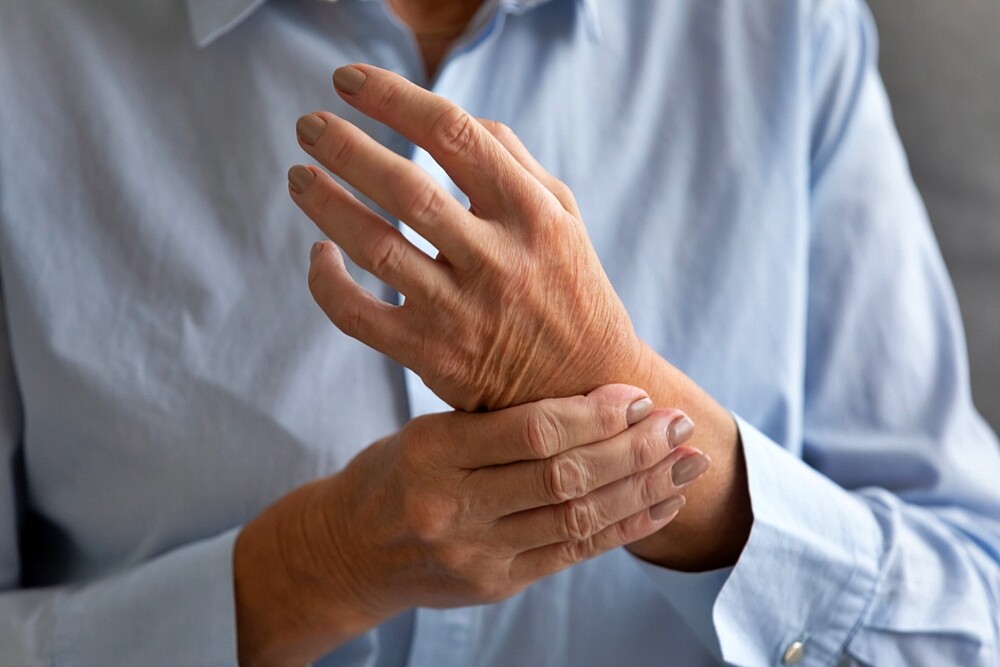What is rheumatism? What the symptoms look like and what treatments are available, we explain here.
What is rheumatism: The four main groups
This is not so easy to answer, because not all rheumatism is the same. This term covers about 200 diseases with different causes and courses, which manifest themselves in inflammatory and non-inflammatory forms. What they have in common, however, is that they manifest themselves in the locomotor system, i.e. in the bones, joints or soft tissues. Four main groups are distinguished:
- Degenerative joint and spinal diseases (e.g. arthrosis)
- Soft tissue rheumatism (e.g. fibromyalgia)
- Metabolic diseases with rheumatic complaints (such as gout)
- Inflammatory rheumatic diseases such as rheumatoid arthritis, vascular inflammation (vasculitis) and collagenosis. These are connective tissue diseases such as systemic lupus erythematosus, which affects the skin or internal organs.
What is rheumatism? That’s what it is
Rheumatoid arthritis is often meant when talking about rheumatism. It is the most common inflammatory disease of the joints, i.e. the joints have limited mobility, so they feel stiff and hurt.
Worldwide, about 0.5 to 1% of the population is affected, women about three times more often than men. Rheumatism is often seen as a disease that only older people have. It often occurs between the ages of 40 and 60. Nevertheless it is possible to fall ill with it at any age.
What are the symptoms?
- Tiredness
- Weakness in performance
- Fever
- Night sweat
- Weight Loss
- Rheumatic nodules, especially on elbows and fingers
- Joints may hurt and swell
- Restricted mobility in the morning (morning stiffness)
What is the cause of rheumatism?
The cause of rheumatism could not yet be clarified. It is possible that cells of the immune system attack the body’s own substances. A hereditary predisposition could be the trigger for this defective regulation.
Can rheumatism be treated? Which doctor can I go to?
Although rheumatism is not curable, the symptoms are treatable. For a successful treatment it is important to receive the diagnosis early. There are specialists in the field of rheumatology and a visit to a rheumatologist is particularly useful in the case of recurring inflammations.
Drug treatment is possible in consultation with the doctor. The right preparations must be selected from a variety of remedies with different effect and side effect profiles. Other measures for rheumatoid arthritis are
- Physiotherapy
- Physical therapy such as cold therapy
- Ergotherapy
- Local treatments such as cortisone injections
- Orthopaedic therapy with e.g. insoles or crutches
Nutrition for rheumatism
A special diet is also useful for rheumatism, because some foods can promote the disease, others alleviate it. It is better to avoid these foods:
- Meat: This contains arachidonic acid, which has an inflammation-promoting effect. Therefore enjoy meat and sausages twice a week at most.
- Eggs: Eggs also contain arachidonic acid, so as a rule of thumb, do not eat more than 3-4 egg yolks per week.
- High-fat animal foods such as lard, liver, butter, cream and high-fat cheeses should also be avoided.
- Alcohol: Alcohol, especially in larger quantities, can lead to a faster destruction of the joints.

